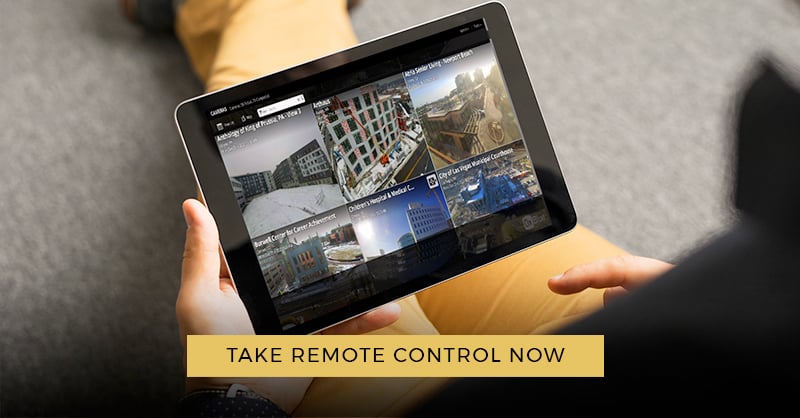How Industry Leaders are Navigating the Impact of COVID-19
Like an unexpected storm, the COVID-19 pandemic threw the construction industry into a hurricane of unexpected delays as many worked to navigate new restrictions to stay safe. And much like storm damage exacerbates known issues in infrastructure, COVID-19 reiterated the industry’s need to shift to new processes and dynamics.
On a surface level, much of the country is back to pre-pandemic construction activity, but industry leaders are still struggling to create plans that answer the “what-ifs” that come with an uncertain future. It isn’t just the urgency the crisis has created; it’s the reality of an industry plagued by labor shortages and slow market growth.
What leaders must do now is recognize and utilize the potential of visual data systems.
Improve processes by re-evaluating commonplace technology.
Despite being the biggest industry in the world, a recent 2020 study by McKinsey & Company highlighted that construction has seen a productivity growth of just 1 percent for the past two decades. The study suggests that the “norm” of time and cost overruns, slow digitalization and lack of consolidation for scale are why there needs to be a major shift in the industry. COVID-19 slowed down many areas of life, but for the construction industry, it’s accelerating much-needed change.
As social distancing measures rolled out across the country, personal protective equipment became part of our everyday wardrobe, travel restrictions came into effect, and many leaders utilized commonplace technology in unique ways. When an inspector couldn’t reach a site, a team’s smartphone, tablets, and 360-degree view construction camera became a patchwork way to get the inspections needed to move forward.
The use of digital tech was already moving into the construction industry, but COVID-19 put the foot on the gas to keep things going. Rather than being able to see the site for themselves, contractors and project managers turned to visual data. Gathering details through remote vision tools became less about time-lapse videos and more about continued collaboration and production.
Manage job sites from anywhere with visual data.
Visual data captured by construction cameras create an advanced system focused on accountability, productivity and communication. Quality construction cameras integrate with a proprietary software or interface system that allows multiple users to share images, view multiple job sites simultaneously, record data, and stream live video from one central dashboard. The visual content captured is easily distributed to team members and stakeholders, allowing management to respond in real-time to any issues seen on-site from anywhere in the world.
This is easily seen as a technological luxury, especially for sites where electricity and an internet connection is hard to maintain. But the best construction cameras offer internal modems that automatically connect, upload high-definition images and even send alerts about after-hour activities with motion detection capabilities. Solar-powered options and heavy-duty specialized casing all ensure that no matter where the job is and what the needs are, construction cameras can help.
As the challenges of the pandemic remain top-of-mind, it’s clear why there’s an immediate need for remote visuals on the ground. But, these tools aren’t a bandaid. Construction cameras are a solution that lasts.
Implement a sustainable solution for construction site monitoring.
Disruptors in the car industry, Carvana, implemented a professional jobsite camera system to sustainably conduct oversight and document progress. A startup, the online-only used car dealer began building their now-signature vending machines for cars across the country. But as a tight team, the multiple visits and overnight stays to the jobsites drained internal resources and impacted employees’ well-being.
Even before the current strains of the pandemic, Carvana used construction camera systems to drastically cut the need for travel. The visual data their system provided was an unbiased photographic memory of what happened on their site. Beyond being able to check in from anywhere, Carvana had clear documentation of deliveries, historical weather data, and an easy way to monitor progress.
Adding multiple construction cameras helped Carvana make better judgment calls about onsite work and essential travel. When travel restrictions went into effect due to the pandemic, the team was still able to effectively monitor the jobsite without interruption. Their remote vision system allowed the team to continue to work, but safely from home.
With a premium construction camera system, construction firms can help alleviate some of the cost pressure from tight budgets. In many cases, cameras can appear as a high-upfront cost, but it’s now an essential piece of equipment that addresses the unique challenges of COVID-19 and the traditional pains within the industry. Professional jobsite cameras will help leaders quickly adapt while maintaining rigorous documentation and oversight. It’s an easy way for firms to avoid costly jobsite errors, monitor their projects, and market their development.
